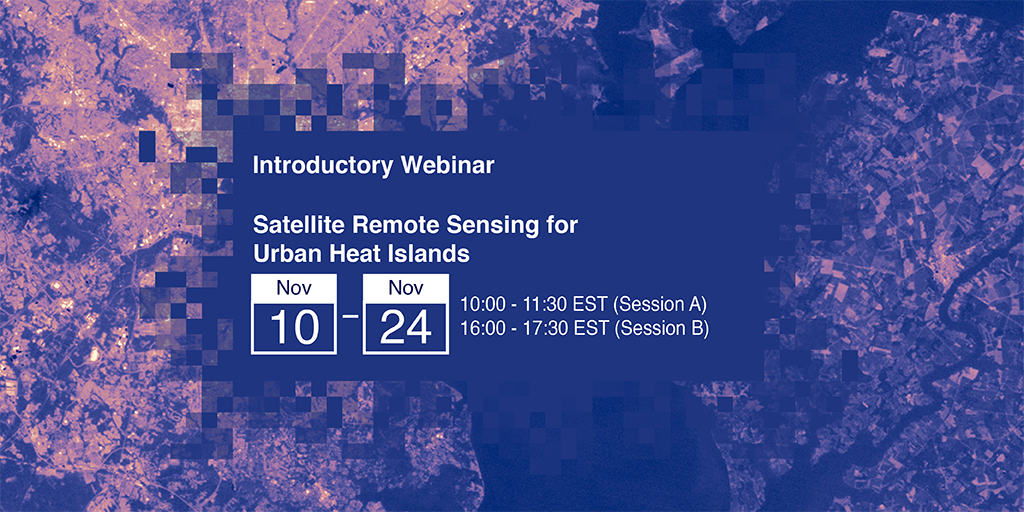NASA’s Applied Remote Sensing Training Program (ARSET) has opened registration for a new open, online webinar series: Satellite Remote Sensing for Urban Heat Islands. This 3-part series (November 10 , 17, and 24) address the use of remote sensing in determining where "hot spots" of land surface temperature are located in urban areas, why these areas are experiencing increased temperature, which populations are most vulnerable, and ways to mitigate the effects through adaptive land use planning.
If you would like to join us or pass along to colleagues who will find it useful, please do so. Please see the training details and registration information below.
Satellite Remote Sensing for Urban Heat Islands
The rapid growth of urban populations, the urban heat island (UHI) effect, and a potential increase in the frequency and duration of heat waves due to climate change, raise a series of issues about the increased health risks of sensitive urban populations to extreme heat and the effective means of mitigating impacts of heat waves. According to the US EPA, urban heat islands affect energy consumption, elevate greenhouse gas emissions, and impair water quality by increasing the temperature of urban water runoff. This will be ARSET's first training on UHI and will be in collaboration with the National Integrated Heat Health Information System (NIHHIS) and the Global Heat Health Information Network (GHHIN).
This training will address the use of remote sensing in determining where "hot spots" of land surface temperature are located in urban areas, why these areas are experiencing increased temperature, which populations are most vulnerable, and ways to mitigate the effects through adaptive land use planning.
Relevant UN Sustainable Development Goal:
Goal 11: Make cities and human settlements inclusive, safe, resilient and sustainable
Course Dates: November 10 , 17, and 24
Times: 10:00-11:30 & 16:00-17:30 EST (UTC-5); There will be identical sessions at two different times of the day. Participants need only to register and attend one daily session.
Register Here
Learning Objectives: By the end of this training, participants will be able to:
- Define what an urban heat island (UHI) is and why it matters to urban planners and public health experts
- Identify which satellites and sensors can be used for assessing UHI
- Give examples of populations that are especially susceptible to heat stress
- Summarize the limitations of satellite data for understanding UHI
- Recognize new methods that incorporate conventional satellite remote sensing data and in situ observations of temperature and humidity from community science and urban field campaigns
- List what landscape features help to explain variations in urban heat islands
- Compute land surface temperature from Landsat 4, 5, 7, and 8 within Google Earth Engine
Audience: Community, municipal, city, state, federal, and private institutions involved in urban planning, health care, energy supply and demand management, and climate mitigation.
Course Format: Three one and a half-hour parts including presentations and question and answer sessions
Retweet Option: https://twitter.com/NASAARSET/status/1316403860651606016

